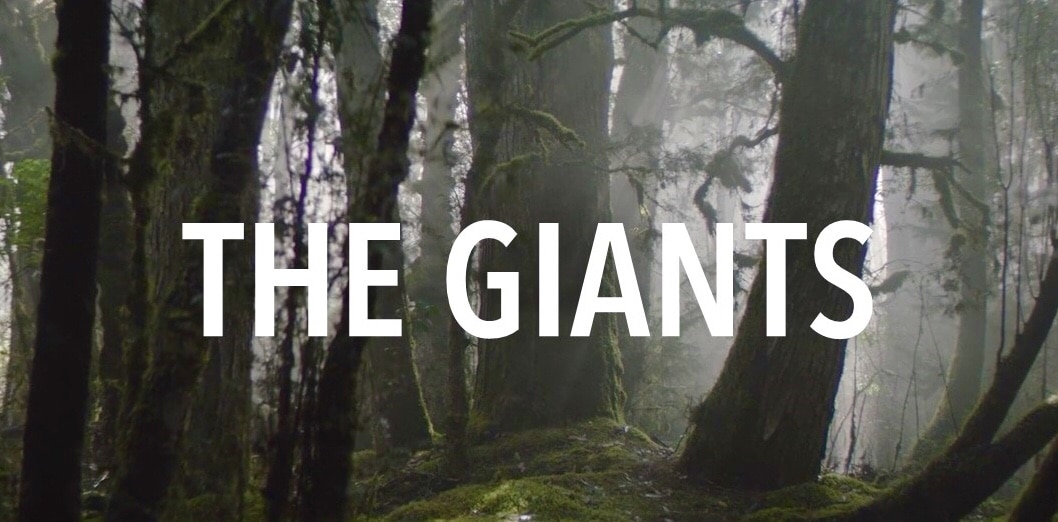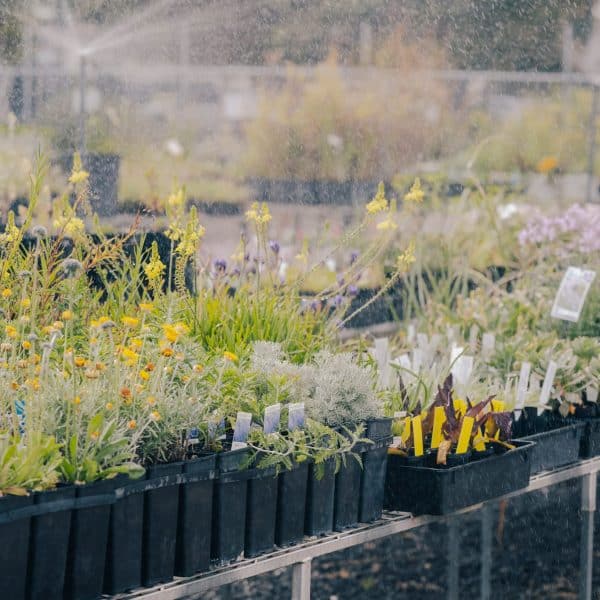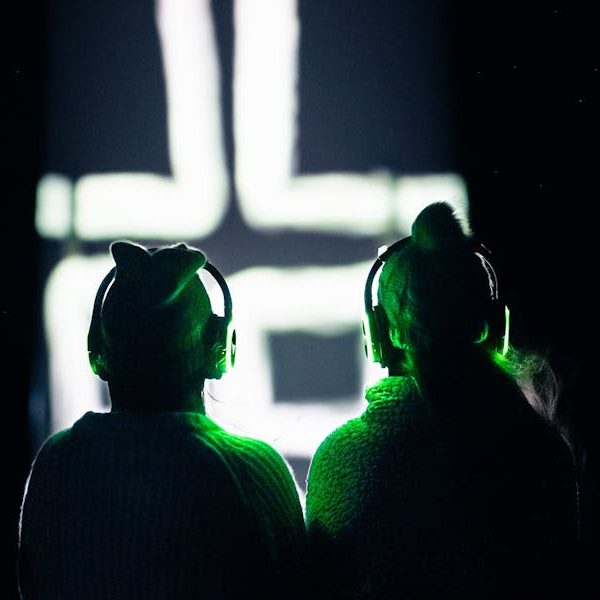The World Premiere “Green Tie” screening of The Giants is happening at Her Majesty’s Theatre in Adelaide, Friday October 28, and will be followed by a Q&A with star of the documentary, Dr Bob Brown, alongside filmmakers Laurence Billiet, Rachael Antony and Helen Panckhurst.
The Giants explores the intertwined fates of trees and humans in a poetic portrait of environmentalist Bob Brown and the Forest.
From a seedling to forest elder: the film is a masterclass that draws on Bob’s 50 years of inspiring activism, from the Franklin campaign for Tasmania’s last wild river, to today’s battle for the Tarkine rainforest.
In 1982 the campaign to stop the Franklin River Dam galvanised environmentalists Australia wide. The most successful environmental campaign in our history launched the political career of Bob Brown, a small-town GP turned environmental activist.
The Giants interweaves a portrait of Bob Brown with the story of the giant trees he has been fighting to save. Combining beautiful cinematography and stunning, animated tree-scapes created by 3D forest scanning, The Giants aims to give a voice to the Forest, reveal our deep connection to trees and ignite a conversation about the right of the Forest to exist.
The Giants is a General Strike and Matchbox Pictures production, written, directed, and produced by Laurence Billiet and Rachael Antony, executive produced by Matchbox Pictures’ Helen Panckhurst and Paul Wiegard for Madman Entertainment. Major production investment from Screen Australia in association with the Adelaide Film Festival, with development and production support from VicScreen. Distribution in Australia and international sales by Madman Entertainment.
Supported by ANDYINC Foundation, Ruffin Falkiner Foundation, Dick & Pip Smith Foundation, Hackett Foundation, Melliodora Fund, Warrowing Fund, Circle5 Foundation, Louise Sylvan, Hayley Baillie, Pixel Seed Fund, Chris Grubb, David Rickards, Maureen Wheeler AO, Joanna Baesvki, Isle O’Reilly.

More information on the film
BOB BROWN
One of the most recognised figures in Australian politics, Dr Bob Brown has had a profound influence on the Australian cultural and political landscape. Like Greta Thunberg his activism began with a few simple, lone acts of protest that helped create a movement. He went direct from a Risdon prison cell to the Tasmanian Parliament.
He has fought to save the Franklin River, Tasmania’s wilderness, to stop uranium mining and the Adani coal mine. He’s campaigned for indigenous rights, gay marriage, gun control, political accountability and against the Murdoch empire. Along the way he’s been imprisoned, assaulted, threatened, and shot at.
At the heart of The Giants is an intimate portrait of Bob Brown as an activist; a poetic and cinematic exploration of the motivations that drove a young doctor to relentlessly campaign on behalf of the Australian wilderness and the impact his actions have had on Australia today.
THE FOREST
The film goes from Bob’s story, the human story, to the story of the Trees – one which scientists are only starting to understand. The Giants showcases this ground-breaking research to reveal the Forest as a complex, intelligent, mass-scale living organism. The stories of Bob and the Trees are interwoven through narrative themes – such as childhood and community – revealing our commonalities, and how deeply our fates are entwined.
WHY TELL THIS STORY NOW?
Australia is one of the few places in the world that still has ‘primary’ forests – in Europe, for instance, only fragments remain. Tasmania is home to some of the oldest and most significant trees in the world. Forests are crucial for air quality, water catchments, habitat and as carbon sinks that are essential to combat climate change.
Yet Australia, like Brazil and the Congo, is a deforestation hot spot. Australia sports one of the highest rates of deforestation in the developed world, with Queensland clearing the equivalent of 1000 rugby fields a day.
Meanwhile, states including Tasmania, Victoria and NSW continue to log precious native forests. In the summer of 2019-2020 more than 20% of our Forests burnt during the catastrophic bushfires, a proportion scientists believe is unprecedented globally.
These devastating fires made headlines around the world. Yet the smoke had hardly cleared that logging recommenced turning Gondwana-era Forest into woodchips. Australia is sleepwalking into deforestation – The Giants wants to wake people up!
CONTRIBUTORS
The story of the forest is brought to life by a group of international and Australian scientists and experts including David Suzuki (Canada) and Merlin Sheldrake (UK), Thomas May and David Lindenmayer (ANU), James Kirkpatrick, Kathy Allen and Tim Brodribb (UTAS) and Aboriginal Linguist and Pakana woman Theresa Sainty.
Insights from Bob Brown’s family, friends and long-term collaborators include Jan, Bob’s twin sister, and Paul Thomas, Bob’s partner, The Wilderness Society’s co-founder Karen Alexander, writer Geraldine Brooks, biographer James Norman as well as former Greens leader Christine Milne and Greens senator Sarah Hanson-Young.
THE TREES
Tarkine / takayna: Tasmanian Myrtle Beech (Nothofagus cunninghamii)
This iconic tree is largely restricted to growing in the tarkine’s cool temperate Gondwanan rainforest.
Covered in moss, laden with lichen they look like an ancient tree from a fairly tale. They are part of a rich eco-system that includes mychorrizal relationships with the extraordinary, blue Cortinarius metallicus fungi. They are at risk of logging and mining activities in the Tarkine.
Styx Valley: Eucalyptus Regnans
Also known as ‘Mountain Ash’ or ‘Vic Ash’, these trees are the tallest flowering plants on earth, the equivalent of Australia’s Redwoods. These magnificent trees play a vital role in water catchments, as habitat and carbon storage but are being logged, mostly for low-value wood pulp and turned into short-life span paper products.
Southern Forests: Huon Pine
Huon Pines are among the oldest growing trees on earth – this slow growing species can live for thousands of years. Fossil records show that Huon Pines have been growing in Tasmanian soil since Gondwanan-times – for around 40 million years. After extensive logging the Huon Pine is now a Tasmanian rarity – surviving trees are at risk of climate change and destruction of their surrounding environment through logging, road building and mining activities.
THE TARKINE / TAKAYNA
The Tarkine, knowns as takayna by Tasmania’s indigenous peoples, is Australia’s largest temperate rainforest and the second largest in the world. Its magnificent forests, noted for Tasmanian Myrtles (Nothofagus cunninghamii) date back to the Gondwana-era – around 60 million years ago.
A rare stand of ancient Huon Pines – some up to 2000 years old – lies within a mining exploration area of the Tarkine. This forest is home to endangered fauna species including the Tasmanian Devil, the Tasmanian Masked Owl and the Giant Tasmanian Freshwater Crayfish, as well as a bio-diversity hotspot for fungi.
The Tarkine, particularly the coastline, is of significant indigenous cultural heritage for the Aboriginal people of Tasmania. The Tarkine is under threat by mining and State logging operations which are exempt from Federal environment and bio-diversity laws.
The Bob Brown Foundation is calling for the Tarkine /takayna to be given an urgent World Heritage National Park listing and returned to indigenous ownership.






